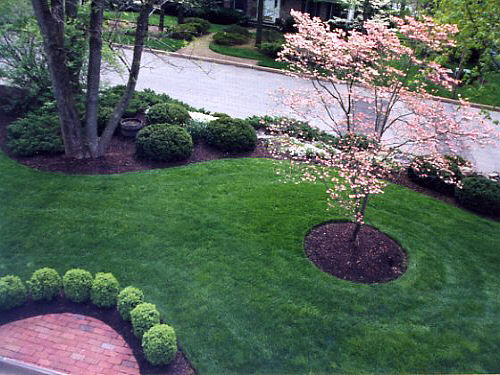You’ve probably heard me say it before when talking design, “It just looks and feels right”. We know there’s more to it than that. But just by implementing a few key principles of good design you can produce better landscapes.
Where Does Good Design Begin?
For me good design begins with considering function. It has to work.
What is the purpose of the space – its intended use? Can you make that work?
How does each space (and its intended use) relate to the others? Can you make that work?
Don’t disregard the artistry in the beginning, but take a a good, long, analytical look at the space. The elements and features will follow.
The residential property is divided into “spaces” or rooms as you often hear them called. Typical spaces might be: arrival & parking, entrances, living & entertaining, etc. You’ll undoubtedly have wishes and requirements for these spaces; they’ll be both functional and aesthetic.
How these spaces visually (and functionally) connect with one another is key. Think of how the rooms of a house are designed. It must make sense.
“We are looking to create visual order throughout the design.”
Lines and forms are the “visual glue” that hold your design together. For the most part they should follow a theme.
A theme could be curvilinear with soft flowing lines and shapes. This is a style I use often, perhaps because I personally like it, but it also works well in many situations.
Straight lines and angles can make an impressive theme too.
Certain situations can sometimes influence a particular theme like a home’s architecture and style. Whatever the theme, using it consistently unifies the design.
Think Floors, Walls and Ceiling
So much of this topic could be related to just the landscape surface or ground level. In fact looking at a typical landscape plan you’re naturally focusing on the lines and shapes as if you were looking down from above. Sort of like the view in the two previous pictures.
 However, equally important is the “spatial design”. This is the 3 dimensional aspect, or the walls and ceiling of the space. It’s what you feel as you walk through the landscape.
However, equally important is the “spatial design”. This is the 3 dimensional aspect, or the walls and ceiling of the space. It’s what you feel as you walk through the landscape.
As you’d expect you compose the “spatial design” with vertical elements like walls, fences and shrubs. Even the lamp post in this picture is helping define space.
The “ceiling”. I think this is so important in the landscape. The ceiling is comprised of those elements that extend vertically above us. Yes it certainly includes overhead structures like arbors and pergolas, but trees as well. Think of a new housing development without any trees – in this case, trees should be the first thing in your landscape budget.
Having these vertical elements in the composition helps to define the space. Now combine them in a consistent theme of lines and form. Your unified design will just flow. Folks will feel comfortable and even secure in the landscape. And that’s great.

